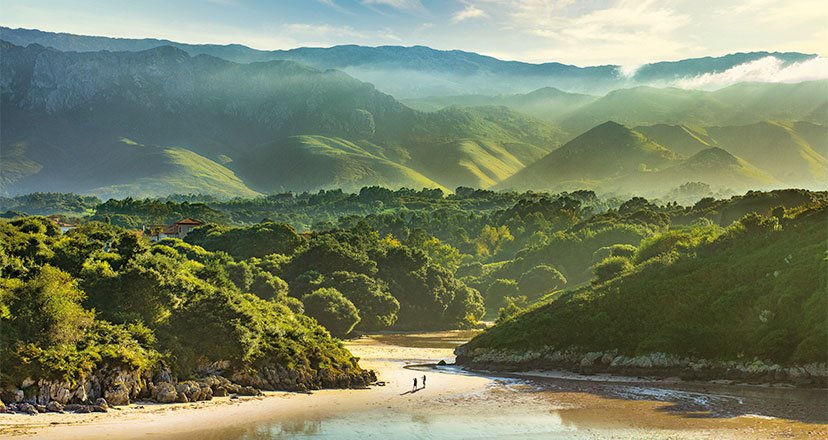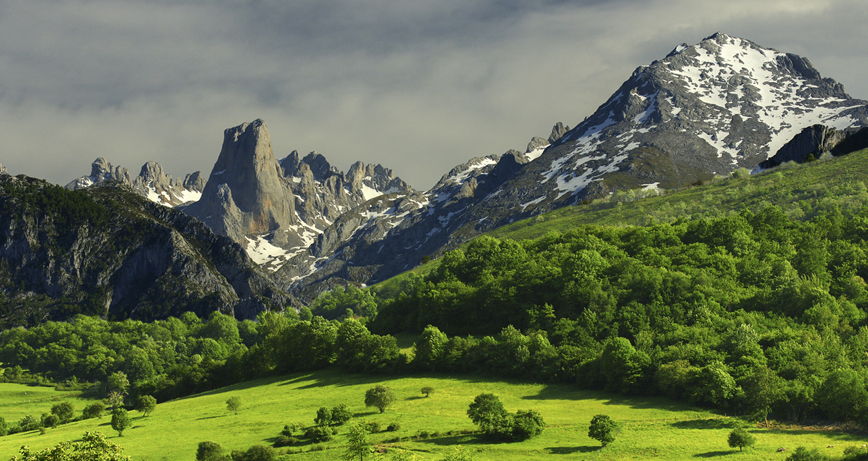Back Top 10 things to see and do in Llanes
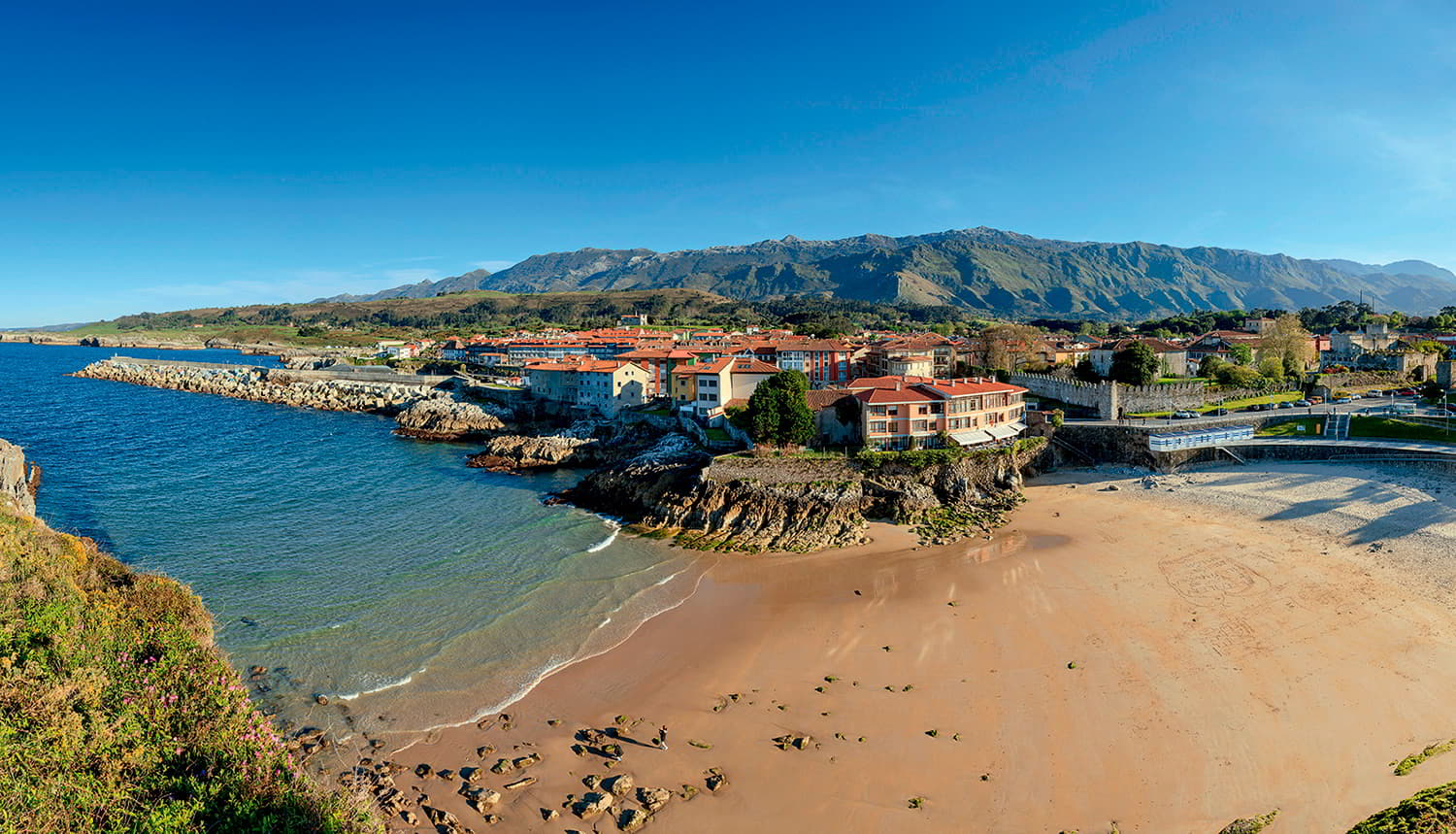
Top 10 things to see and do in Llanes
Llanes, both the town and the municipality, stand out for the beauty of its landscapes, its history and culture, and its pleasant atmosphere.
Llanes, both the town and the council, are characterised by the beauty and beauty of their landscapes, and by an intense and rich history, which is still present today, and which makes this area of Asturias one of the most attractive places in Spain for locals and visitors alike. This is why Llanes, the council and the town, has a year-round atmosphere, and you can meet people from all over the world.
The settlement that we know today as the town of Llanes is very old and already in the Middle Ages, prior to the Town Charter granted by Alfonso IX of León, it was a notable administrative, military and religious centre, as well as having an important port and an outstanding presence of local nobility. These truly privileged conditions made it an enclave that had to defend and protect itself from possible invasions. This is why the urban enclosure was completely walled. The northern part of the wall - the largest in Asturias - remains from that period, as well as a solid, round tower, also dating from the 13th century, which was an austere military construction that today neighbours the Casino, a beautiful Indian building dating from 1910.
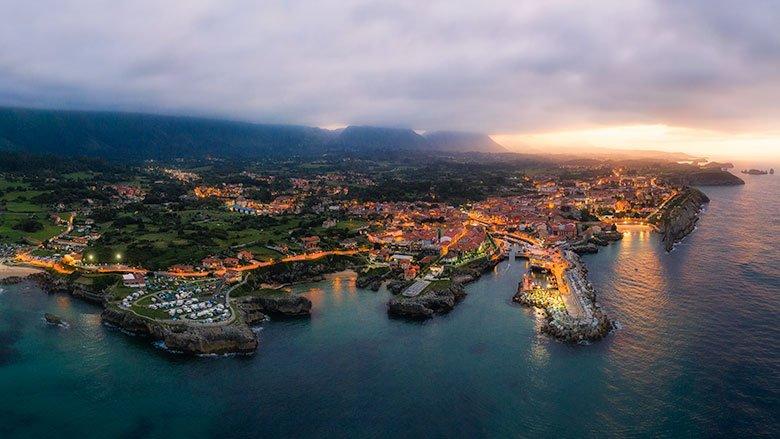
But Llanes is much more than a very noble and loyal town, as well as illustrious, emblazoned, elegant and atmospheric. The council has more than 30 beaches, each one more idyllic, and beautiful coastal villages. And inland, dream villages, valleys and mountains form an orography that adds to the foothills of the Sierra del Cuera, and which on many occasions is a privileged vantage point from which to contemplate the Picos de Europa.
The historic centre of the town, the Indian architecture, the sea and mountain viewpoints, the coastal path, the Camino del Norte or Camino de la Costa, the inlet of El Vau between Barru and Niembru, the Ethnographic Museum of Eastern Asturias, the bufones, the castros, or the inland beaches are some of the natural and cultural beauties not to be missed on a tour of Llanes and its council. In addition, there are places where you can eat delicious food, from restaurants and cider bars to beach bars; shops ideal for all kinds of shopping - gastronomic shopping, of course; Festivals of Tourist Interest; trendy and fashionable places... You will find all this and much more in a unique place in the world called Llanes.
Let's start our fascinating journey!
A historic quarter with a medieval appearance and a unique festive system of banners
When you are walking through the historic centre of Llanes, don't forget to look at the ground... The reason? To read and enjoy the forged verses of the book "Poemas de Llanes" by Celso Amieva, which are marvellous. It is very likely to be the only Historical Centre where you can find a work of such a high level, forged in the stones that form its floor, and composed with so much love for Llanes...
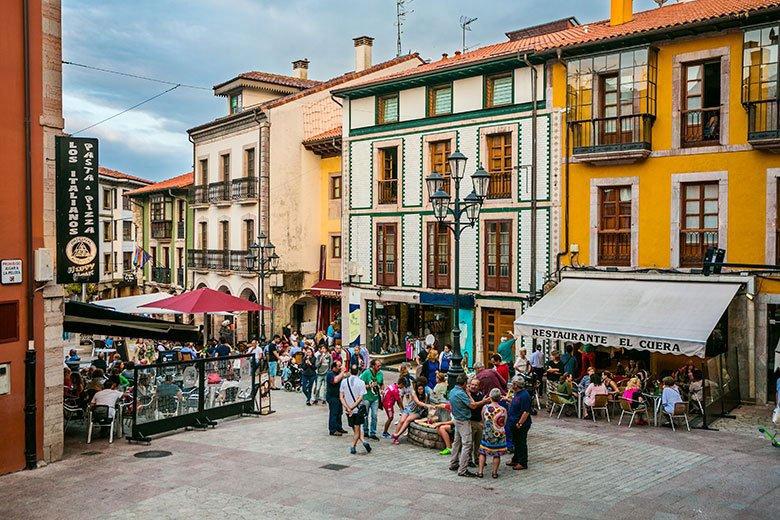
And from the ground, look up to contemplate everything around you and you will see a town with a medieval appearance that conserves the traces of its medieval wall and its ancient entrance gates. The wall has one of the most remarkable walls in the north of Spain still standing.
The Torreón; the house of Juan Pariente - the oldest in Llanes - located in the main street; the palace of the Rivero or Gastañaga family; the palace of Posada Herrera or the striking palace of the Duke of Estrada, from the Baroque period and of large dimensions, with two square towers on its main façade, are some of the landmarks of this historic quarter.
Likewise, the Basilica of Llanes, in Gothic style and begun in the 13th century - hence its Romanesque elements - and with a spectacular bougainvillea on its exterior walls, is another of these special places. The tour is completed by the Casa del Cercáu; the chapel of La Magdalena, located in the square of the same name and dating from the 13th century, and the square of Santa Ana, a square in the historic quarter where the chapel of Santa Ana is located. This chapel was outside the walled enclosure, next to the gate of San Nicolás and today Santa Ana is the patron saint of llaniscos sailors.
However, you cannot leave the town of Llanes without savouring its intangible but equally pleasurable heritage: its customs, its traditions, its fiestas, its way of life. Llanes has a festive model that you won't find anywhere else.
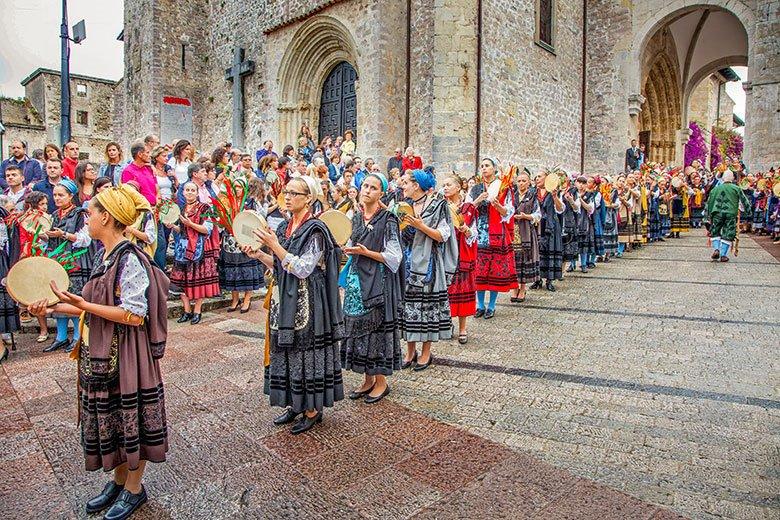
The unique festive system in Llanes is based on the peaceful rivalry between three sides: La Magdalena, San Roque and La Guía. The sides are not religious brotherhoods but groups in which the people of Llanes compete in open and cordial competition. What's more, each of the groups expresses itself through its own symbols: a religious icon, a date and month of celebration, a flower and music, among others.
So you will discover that the town of Llanes has three Festivals of Tourist Interest, one for each of its sides: that ofLa Magdalena, with its chapel of La Magdalena, which is celebrated in July; that of San Roque, with its chapel of San Roque, which is celebrated in August, and that of La Guía, with a beautiful chapel in the vicinity of the town, which is celebrated at the beginning of September.
Outside the town, you can also enjoy two other Festivals of Tourist Interest: in the beautiful village of Nueva, the Festival of Santo Cristo del Amparo, which takes place in mid-September, and in the beautiful village of Cue, La Sacramental, which is held on 24 June.
A town with three beaches: El Sablón, Puertu Chicu and Toró.
Llanes is a town that has always looked towards the sea. First with its port, and later, with the passing of time and the emergence of the leisure society, with its beaches.
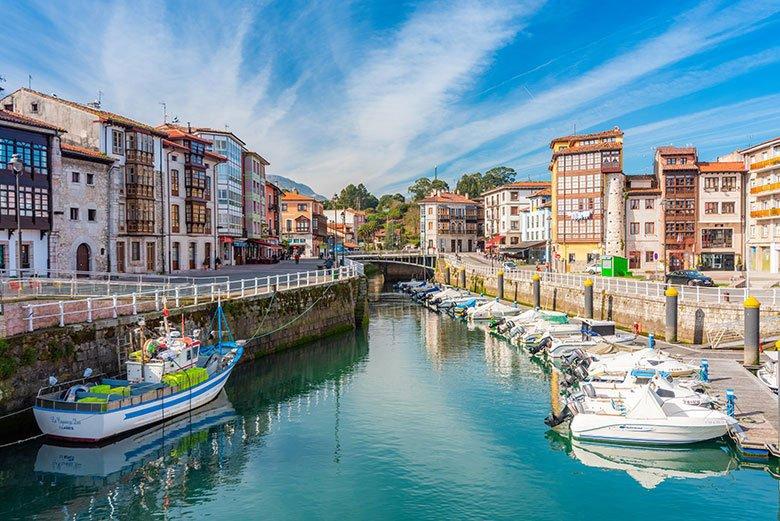
There are three beaches in this fishing village: El Sablón (in the photo at the top of this post), Puertu Chicu and Toró. Each one is more beautiful and representative of the Llanes coast, and all three are very different from each other.
El Sablón is located in the heart of Llanes, at the foot of the mythical and spectacular San Pedro promenade, and very close to the port. With a semicircular shape and fine white sand, it is protected from the waves, so when the tide is calm, it becomes an authentic natural swimming pool with wonderful views. It is the best place to contemplate the Llanes wall and the ascent to the San Pedro promenade. Moreover, it is usually very popular with locals and foreigners alike.
Puertu Chicu is the least known of the town's three beaches and the one most frequented by the inhabitants of Llanes. It is a small horseshoe-shaped cove, located between the lighthouse and Punta Huerto Roque. Located at the eastern end of the town, you will catch it on your way to Toró beach. It has the peculiarity that at high tide it almost disappears, leaving only a small strip of sand and pebbles, while at low tide the beach triples in size.
Toró is the most unique, landscape-wise, of the beach trio. Its combination of pointed rocks and sand makes it unique in its morphology. The waves are usually moderate, so bathing is not dangerous at all, and it also has a setting with a path, viewpoint and restaurant included, which is perfect for enjoying the views and the atmosphere, and at the same time tasting the rich flavours of the area.
The port with the most artistic breakwater in the world: the Cubes of Memory
There are few ports in the world like Llanes. For its narrow morphology, marked by the natural scenery, where the river Carrocéu flows into the sea. For its splendid views of the Cuera. Because of its proximity to the imposing promenade-viewpoint of San Pedro.
And also because the enlargement work it underwent at the end of the 20th century culminated in an unusual and highly original artistic intervention in this type of setting: on the breakwater of the port, the artist Agustín Ibarrola designed and created one of his best-known works, entitled Los Cubos de la Memoria (The Cubes of Memory). Through this work you will get to know the memory of the artist, the memory of art and the memory of the territory.
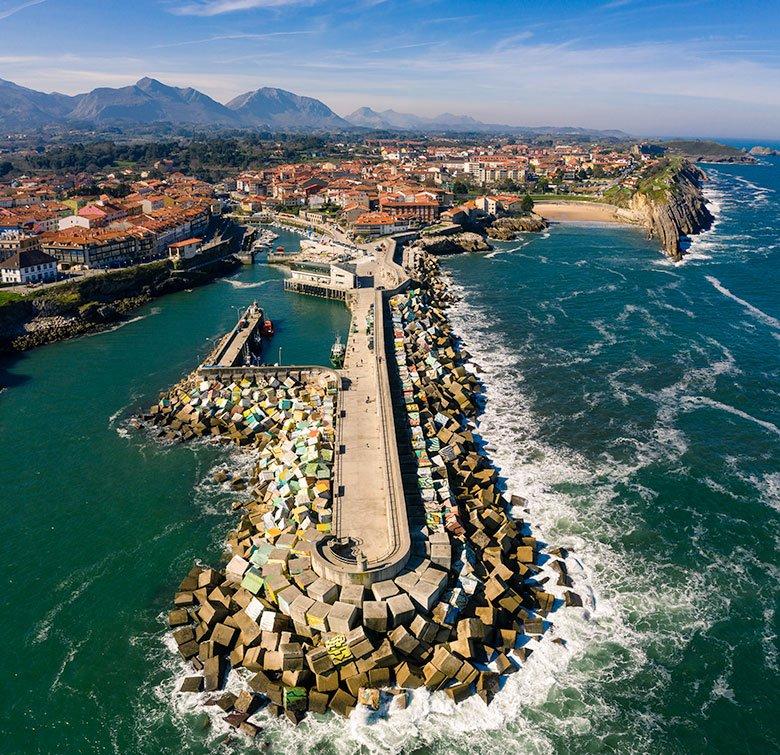
This great work was carried out in three phases: the first began in the summer of 2001, the second was executed in 2003, and the third and final phase was completed in December 2006. The artist painted cubes - some figurative and others abstract - on both the south and north sides of the breakwater, and today more than 200 concrete blocks are decorated, turning the port of Llanes into a great open-air museum of memory.
Llanes, a film set
Of all Asturias, the council of Llanes is the one that has been the most frequently used as a natural set for cinema, television and in general for any audiovisual work. Its landscapes, its atmosphere, its environment, its history, its people... everything in Llanes is deeply inspiring for the seventh art.
And precisely so that you can enjoy and get to know these marvellous scenes from the different filming locations, the tourist and cultural project called "Llanes de cine" makes it very easy for you. This cinematographic itinerary will allow you to visit up to 25 places where dozens of sequences from feature films, short films and television series were shot. At the locations you'll find signs posted with information about the film shot there, the year of release and the director, and other signs provide information about the complete route, detailing locations and films.
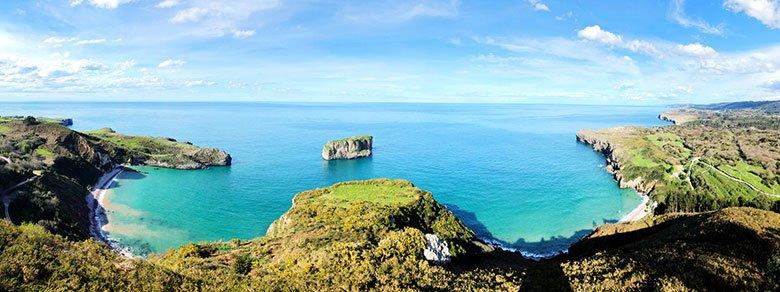
You can see locations in the town of Llanes: the Old Town, the San Pedro promenade, the port, the chapel of La Magdalena, the Parres Sobrino square, the Toró beach and the Partarríu palace. And also to the east and west of the town.

To the east of Llanes, the village of Cue, the beach of Ballota, the golf course, the cliffs of Vidiago gates, the viewpoint of La Boriza, the cliffs of Buelna, La Borbolla, Purón and Pancar.
To the west of Llanes, Po and the coastal path in that area, the beach of Borizu, the beach of Barru, the cemetery of Niembru, the beach of Torimbia, the beach of Cuevas del Mar, the buffoons of Pría, Posada, Ardisana, La Huera de Meré, El Mazucu and La Pereda.
Undoubtedly, a series of dream places!
Sea and mountain viewpoints
One of the possibilities offered by the unique orography of Llanis and its location in the geography of the Principality of Asturias is that you can find beautiful viewpoints of sea and mountain, with splendid views of the coast and also of the interior at the same time.

One of those places with special charm due to the panoramic view it offers is the promenade-viewpoint of San Pedro, which, located on a natural promontory, rises majestically over the town of Llanes, offering a detailed view of it, as well as of the port, the Sablón beach, the coastline to the east and west, and the Sierra del Cuera mountain range.
A place of relaxation and stroll that attracts thousands of people and characters, among others Leonor of Austria - sister of the emperor Charles V -, and which today forms part of the coastal path that runs through the council of Llanes.
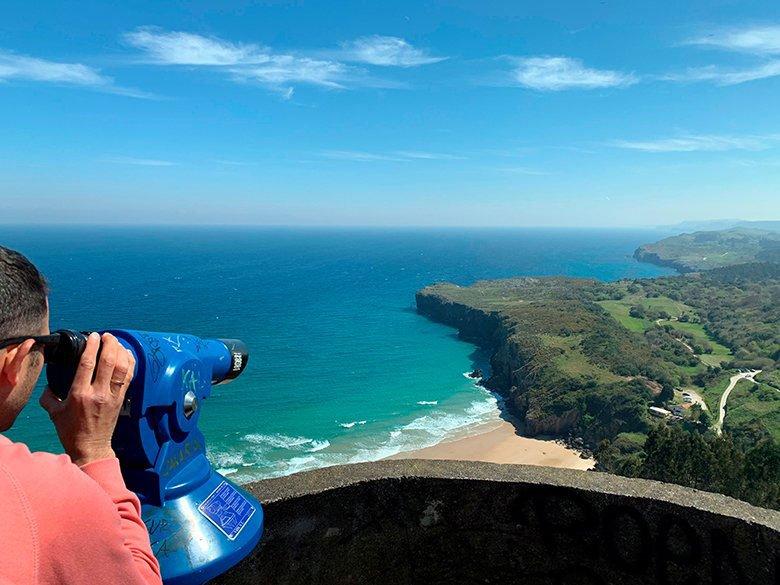
Another of these places with marvellous views is the viewpoint of La Boriza, which rises above the beaches of Andrín and Ballota, and its famous castro. And also on the coast, don't miss the Alto de Torimbia, with spectacular views of this beach and the entire coastal and mountainous surroundings.
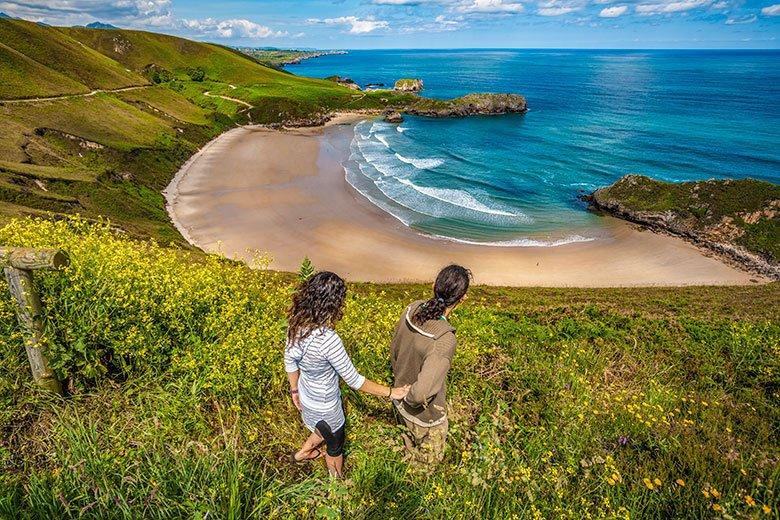
The village of Los Carriles, in the interior of the council, has a wonderful viewpoint overlooking the Picos de Europa, with splendid views of the mythical Picu Urriellu or Naranjo de Bulnes.
A world of paths, roads and routes
Llanes offers a whole world of paths, trails and routes. One of the best known is the coastal path, a pedestrian and cycle route that runs close to the coast for 65 kilometres, with little gradient and which connects the village of Bustio with the beach of Guadamía. It is undoubtedly a good way to get to know the entire coast of Llanes.

But you also have many other routes and paths to enjoy these incredible landscapes: the Camín Encantáu, the Route of the Colours of the Oscuru Valley, the Route of the Purón River, the Invisible Valley Path, the La Cuesta Path, the Mañanga Route or the one from Alto de la Tornería to Los Resquilones peak.
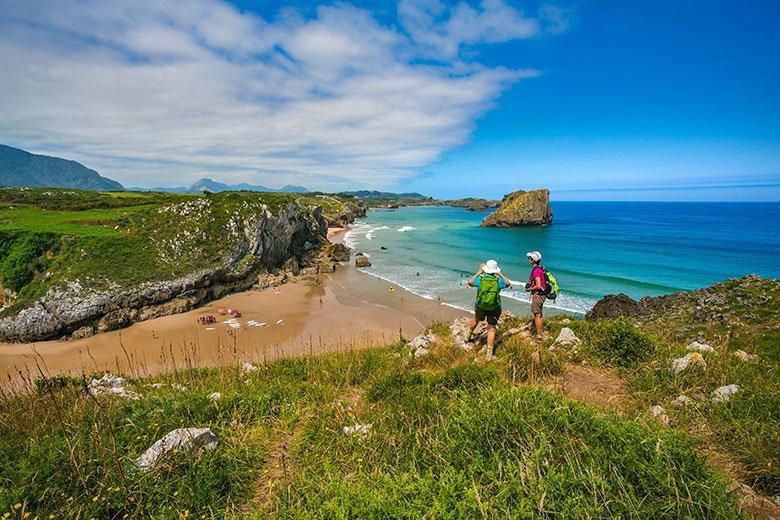
And of course, the most notable European cultural itinerary, the Way of St. James, crosses the council of Llanes, specifically the Northern or Coastal Way, generating a constant flow of pilgrims who add a note of cosmopolitanism and even exoticism to the atmosphere of the council.
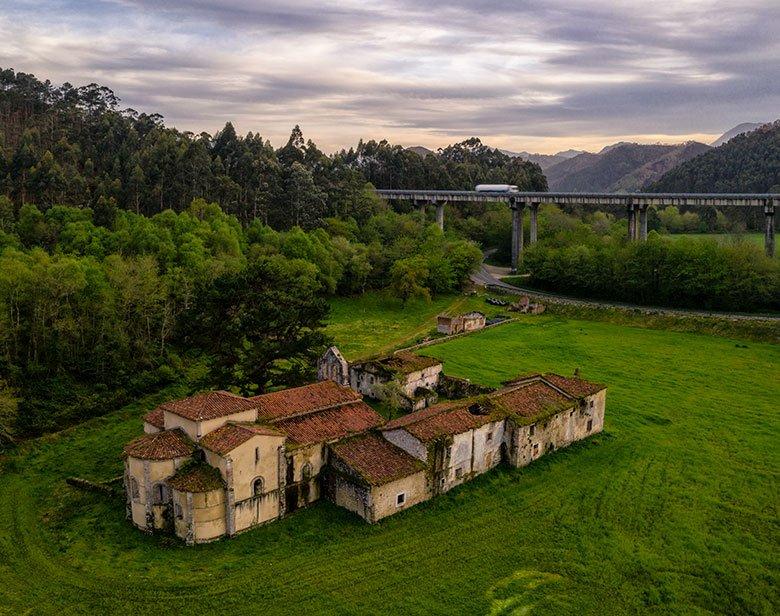
In addition, this Way has landmarks of vital importance in the council of Llanes, such as the monastery of San Antolín de Bedón.
The Niembru estuary and its idyllic scenery
The port of Niembru, also known as the inlet of El Vau, is located at the mouth of the estuary of the same name, close to Cabo Prieto. This mouth forms an inlet with very calm waters and is dry at low tide.
On its shore stands thechurch of Nuestra Señora de los Dolores with its adjoining cemetery, creating a unique scene which, depending on the time and light of day, exerts an aesthetic fascination. It is therefore no coincidence that it is one of those scenes that has captivated artists of all kinds, including film-makers.

At high tide, this fine sandy estuary-beach is very popular for bathing and for all kinds of sports, especially paddle surfing.
You may also come across pilgrims on the Camino del Norte or the Camino de la Costa, sometimes coming from distant latitudes, and who, like you, are impressed by the scenery, with the beautiful village of Niembru as a backdrop.
A paradise for water sports
The coast of Llanes, with its beaches and coves, its cliffs, its forts, its caves, its cenotes and its spectacular orography, characteristic of the karstic system, is a privileged setting for water sports.
You can do almost anything you can imagine in the waters off the coast of Llanes: scuba diving, snorkelling, sea kayaking, sailing or motorboating, fishing, bird and marine animal watching, among other possibilities.
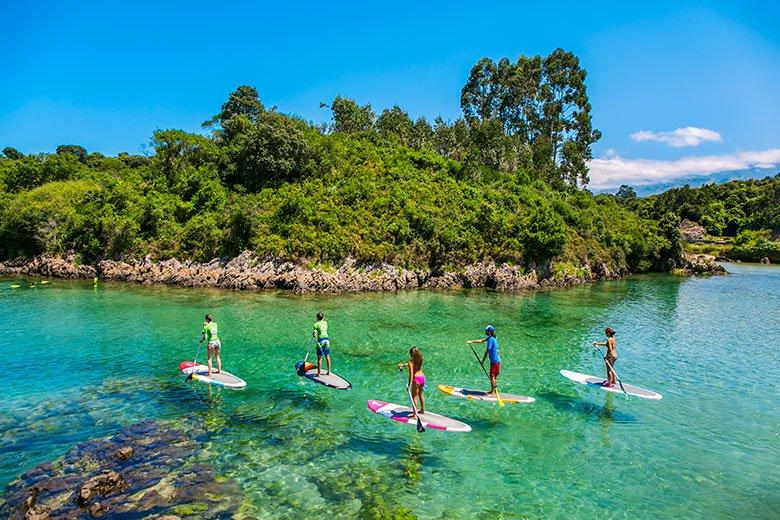
And what's more, for many years now, the Llanes coastline has been the Mecca of paddle surfing in the north of Spain, both in the cross country and wave modalities, and even in an unusual modality such as paddle yoga.
Due to its orography, this coastline, some of whose beaches and coves, such as El Vau, between Niembru and Barru, are sheltered from the swell in the open sea, is ideal for beginners in this sport, and also for enjoying wonderful trips contemplating the immense beauty of this unique coastline in the world.
The Ethnographic Museum of Eastern Asturias, a space for learning about traditions
Just 4 kilometres from the town of Llanes, in a charismatic village called Porrúa, is the Ethnographic Museum of Eastern Asturias. Managed by the El Llacín Cultural Association, this museum is a space dedicated to the ethnographic memory and traditions of this area.
The land and buildings of the facility are the result of a donation from an Indian family of Porruño origin. You will be struck by the fact that it is a dynamic cultural centre, dedicated entirely to the exhibition and dissemination of elements of historical and ethnographic interest, and that it also has a research section. It also organises routes around the territory.
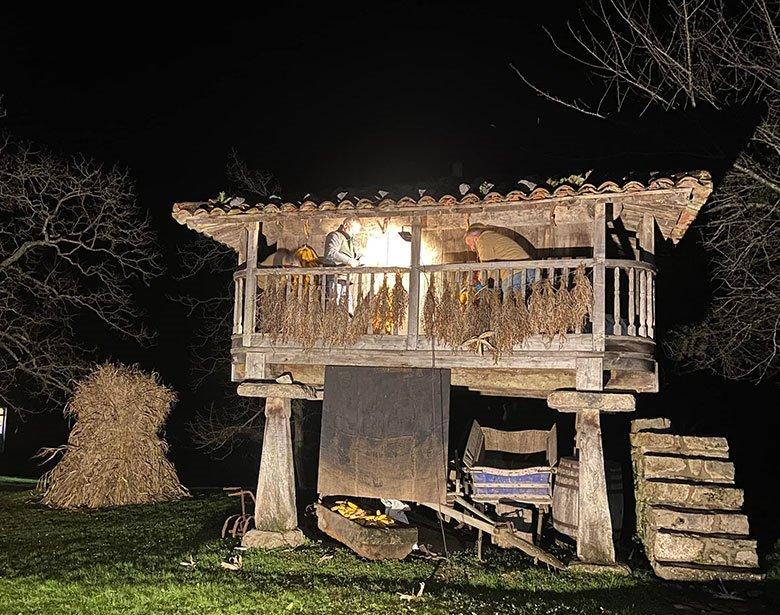
The Museum's buildings are located in an estate set up as a public park, with a wide range of fruit and forest trees. Among the trees is a monumental avocado tree brought from Mexico and planted in 1906, whose trunk has a perimeter of more than 7 metres.
The houses that make up the Museum are arranged in two parallel rows connected by an overhanging wooden corridor. Inside you can visit the rooms of a traditional peasant house: vestibule or hall, kitchen, living room, bedroom, stable and cider press, and a series of themed exhibitions dedicated to the production of cheese and butter, the manual manufacture of tiles and bricks, textile processes, traditional folk clothing, carpenter's workshop, wood cutting tools, washerwomen, tools, as well as a collection of enamelled metal pieces.
The coast of wonders: beaches, buffoons and castros (fortified settlements)
Llanes is the council of Asturias with the longest coastline - 56 kilometres - along which you will find a succession of wonders. Impressive cliffs, caves, arches, bridges, bufones, dolines, castros (islets) and of course beaches, two of which are inland beaches - the only ones in northern Spain.
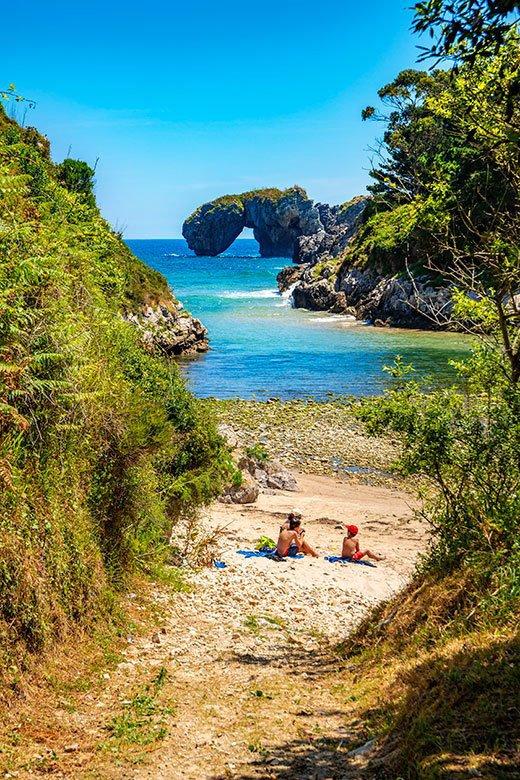
And on this coast of wonders, a premium selection of beaches - most of them small in size - and some with ephemeral sands, so you 'll have to time your stay with the low tide, or else enjoy the impressive natural pools that form at high tide. However, in all of them there is an intense two-tone colour scheme made up of the green of the grass and the blue of the sea.
Moreover, the coast of Llanes still preserves a certain environmental virginity, given that some of the sandy beaches and coves must be reached on foot, often crossing idyllic spots.

There is no doubt that among all the beaches of Llanes, there are two that are particularly striking because they are inland, and you find them in the middle of a meadow like a kind of marine miracle. And the fact is that the karstic system facilitates this filtering through the perforated rocks with thousands of cavities, and this is how this salty miracle arises, also conditioned by the phenomenon of the tides. So when you visit Gulpiyuri or Cobijeru - as the two inland beaches are called - you may find them with more or less salt water.
In this journey through beauty there are two moments that you must experience if you can:

One would be to observe the phenomenon of the bufones, which are those jets of sea water that filter through the cavities of the perforated coastal rock when there is a strong tide, at the same time as they emit a characteristic roar or sound from which they get their name. The bufones de Pría, Arenillas and Santiuste are well known.
And the other is to contemplate the Sierra del Cuera and the peaks of the Picos de Europa on a day's sailing along the coast.

Of course, you will realise that the wonders of the coast of Llanes are not only natural, but also cultural: it is very easy to come across monasteries on the beachfront, such as San Salvador de Celorio, to see pilgrims passing by on the Camino de la Costa when you are on the beach, to come across hermitages or ruins that overlook the sea from truly privileged spots, or that you will suddenly find yourself in the middle of the sea. hermitages or ruins overlooking the sea from places of real privilege or that suddenly, walking along the coast, you discover the ruins of a tide mill like the one near the beach of Cobijeru, in Buelna.
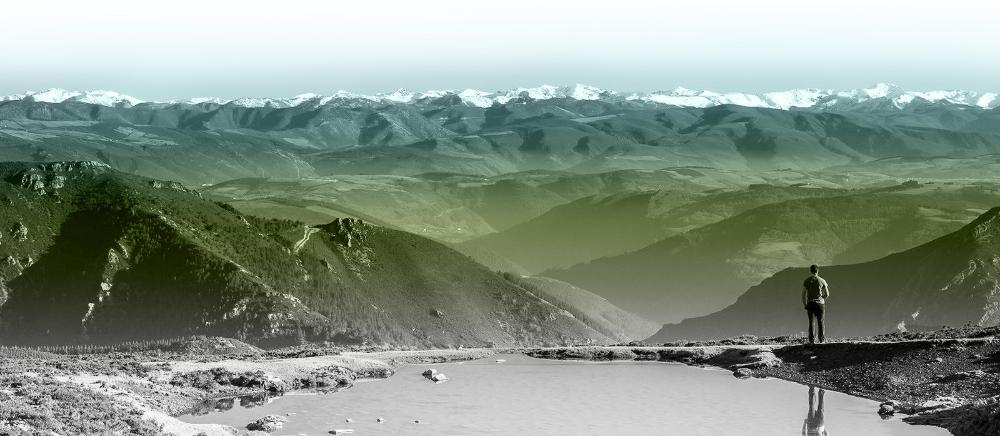
Subscribe to our newsletter and take advantage of offers, discounts, and news
Subscribe

